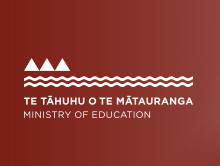He ingoa tino roa
He whakarāpopoto
This article provides an explanation of the longest place name in Aotearoa.
He whāinga ako
To find out the meaning of:
TaumatawhakatangihangakōauauoTamateaturipūkakapikimaungahoronukupōk
aiwhenuakitanatahu.
He whatu pānui
Hei tautoko i te kaipānui
- The text contains four questions that will provide opportunities for students to discuss their ideas in pairs and small groups to share in a larger group.
- Children enjoy pronouncing this place name. Create a mini competition where the students time each other to see who can say it the fastest and the most clearly.
- Tamatea Pōkai Whenua was a well-known explorer. What do the students know about him?
Kia mataara!
- Pronouncing this place name in one breath may be challenging for some students.
He kete kupu
| tahu | loved one |
| tapaina | to name |
Hei wānanga i te reo
- Discuss the use of passive verbs, for example, tirohia and kōrerotia.
- Look at the use of āta: āta tirohia, āta haere, and āta whakarongo.
- Look for the kīwaha used in this text ("He tino tupuna...", "I reira ka...") and talk about why and how kīwaha are used.
Hei whakaihiihi
- List explorers that the students know.
- Identify explorers who are famous for climbing mountains.
- List local place names and their meanings.
Hei whakatā
- Write the place name on a sheet of paper and place on the wall. This will encourage students to practise saying the name and it provides a convenient reference point.
- Locate the hill on a map.
- Look at a map of Aotearoa and identify other places that Tamatea Pōkai Whenua visited.
Hei wānanga
- Provide the students with the copy of the place name, then get them to sketch the sequence of events above the word.
- Draw a hill. Use its shape and the image of Tamatea Pōkai Whenua climbing to the top to create a soundscape using your voice and wind instruments. (Refer to: Our Music, A Teachers' Guide. (1989) by Elizabeth Kerr.)
- Using the place name create a chant by singing, whispering, speaking, or repeating certain sections of the word.
Hei mahi
- Discuss the different types of kōauau. Do the sounds vary according to the material that they were made from?
- Read the story 'Taku haere ki Te Waipounamu' in He Kohikohinga 42 to find out more about Tamatea Pōkai Whenua.
He whakapuaki māramatanga
- He aha te kaupapa o te pakiwaitara? (Ko te tikanga o te ingoa tino roa rawa i Aotearoa.)
- Ko wai te ingoa o te tangata nāna te ingoa i tapa? (Ko Tamatea Pōkai Whenua.)
- He aha te taonga i whakatangihia e ia? (He kōauau.)
- He aha i whakatangihia ai e Tamatea Pōkai Whenua tana kōauau? (He tangi ki tana tahu.) Whakatangihia ai e...
- I piki koe i tētahi puke? He aha ai? (Ka rerekē ngā whakautu.)



